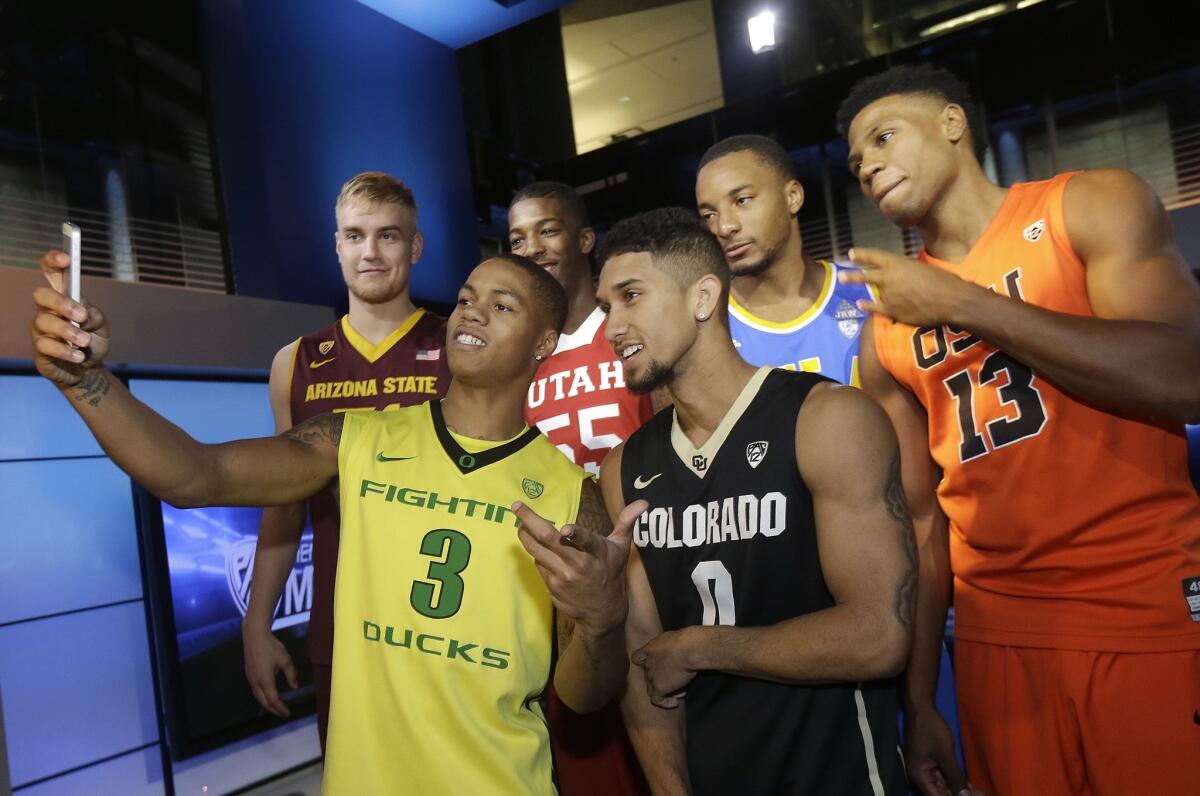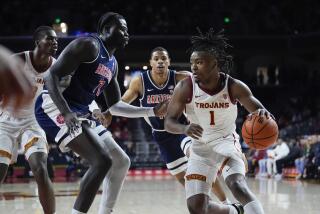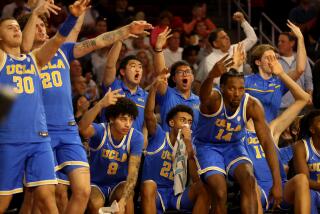Pac-12 basketball will put its reputation on the line early in season

- Share via
At the beginning of October, Bill Walton, the UCLA basketball star turned television analyst, went to a Crosby, Stills and Nash concert that was so good, Walton said, that it reminded him of the Pac-12 Conference.
“It was a message of hope and optimism and a chance to succeed and make a difference, and it started with ‘Carry On,’ and it finished with ‘Teach Your Children,’” Walton said. “Which is the story of the Pac-12 Conference.”
For those who lack Walton’s imagination, that requires some explanation. Fortunes have shifted quickly for Pac-12 basketball, which emerged from a barren five-year stretch with a resurgence last season.
However, that was followed by an exodus of talent to the NBA. Whether the conference can carry on its recent success depends largely on its recruits and new starters — in other words, how well the conference teaches its children.
Ready or not, the Pac-12 will be tested early. For all the teams except USC, the regular season started Friday. And the nonconference slate includes a string of high-profile games against traditional basketball powers that will serve as a litmus test.
It will either signal the Pac-12 has more to do, or it could cement the Pac-12 as a reestablished power fresh off sending six teams to the NCAA tournament, with three advancing to a regional.
“I don’t think that that’s going to happen again this year,” said Don MacLean, an analyst for the Pac-12 Network. “But I don’t think there’s severe drop-off either.”
The brawnier schedule is a step up for a conference that has lagged behind other power conferences since UCLA reached the Final Four in 2008. The schedules had dropped in respectability, too.
Last season, for example, when Utah was a bubble team for the NCAA tournament, its nonconference schedule included games against Evergreen State, Grand Canyon and St. Katherine. With no formidable nonconference opponent, Utah’s bubble burst.
The problem, Utah Coach Larry Krystkowiak said, was that the Utes got too good too fast. They didn’t have a strong early schedule because they didn’t know they’d be an NCAA tournament contender.
This season, Utah, which was picked to finish second in the conference in a preseason media poll, will play a beefed-up schedule. The Utes play in prime time at Kansas, which is No. 5 in the Associated Press preseason top 25. They also play at No. 16 San Diego State, Brigham Young and Nevada Las Vegas and at home against No. 11 Wichita State.
“On paper, I don’t know how intelligent I am to bite off some of that,” said Krystkowiak, whose team is ranked 25th, the only Pac-12 school other than No. 2 Arizona to appear in the AP poll. “I just felt like our team was ready for it. At the end of the day, I think it’s becoming pretty clear to coaches around the country that if you want to be considered, you have to go up against those types of teams.”
Stanford plays No. 10 Texas and No. 15 Connecticut, the defending national champion. Arizona will meet Missouri, No. 13 Gonzaga and No. 24 Michigan, plus more big matchups at the Maui Invitational. California, a middling team in the conference, plays No. 23 Syracuse and No. 3 Wisconsin.
UCLA may have the toughest nonconference schedule in the Pac-12. The Bruins will face No. 19 Oklahoma, Gonzaga and No. 1 Kentucky. In the Battle 4 Atlantis tournament, a matchup with No. 6 North Carolina or Butler is guaranteed, and a game against No. 7 Florida or Wisconsin is possible.
It’s a risky proposition. A good showing means instant national acclaim. But UCLA is young, untested, with plenty of growing to do. And there’s little reprieve. UCLA’s first conference games are at Colorado and Utah.
“We have to hope by the time we get to the Utah-Colorado series that we’re a much different team,” UCLA Coach Steve Alford said.
UCLA and Arizona, as usual, will be largely responsible for the conference’s reputation. The bottom half of the conference doesn’t have the heft to match the Atlantic Coast or Big Ten conferences.
“The challenge for the basketball teams,” Walton said, “is to come up to Arizona’s level.”
Arizona was the leader last season when it ripped off 21 consecutive wins to start. Included were victories at San Diego State, against Duke and at Michigan.
Scheduling those games, Arizona Coach Sean Miller said, helped the conference as a whole. Especially when those high-profile games become high-profile wins. Recruits watch, as do NCAA selection committee members, and perceptions change.
The number of games with national implications has increased, Walton said. This year, Walton will work 20 Pac-12 games for ESPN.
“I think our conference is as respected right now as it’s ever been,” Arizona’s Miller said.
Since 2009, the Pac-12 has fallen behind in most metrics, including the most important: how its members have fared in March.
From 2010 through 2013, the conference did not have a top-four seed in the NCAA tournament. It still hasn’t sent a team to the Final Four since UCLA in 2008. In that time, the conference has had an average of four teams per year in the tournament.
“I think everybody’s conference standard is how many teams do you get into the tournament,” MacLean said.
As Krystkowiak attests, winning in November and December would help the Pac-12’s case come March.
How Pac-12 team fared in the 2014 NCAA tournament
The Pac-12 Conference sent six teams to last season’s NCAA men’s basketball tournament. A look at how they fared:
Seed; Team; Record; Round
1. Arizona; 3-1; Regional final
4. UCLA; 2-1; Regional semifinal
7. Oregon; 1-1; Second
8. Colorado; 0-1; First
10. Stanford; 2-1; Regional semifinal
10. Arizona State; 0-1; First
Total: Six teams; 8-6
More to Read
Go beyond the scoreboard
Get the latest on L.A.'s teams in the daily Sports Report newsletter.
You may occasionally receive promotional content from the Los Angeles Times.











